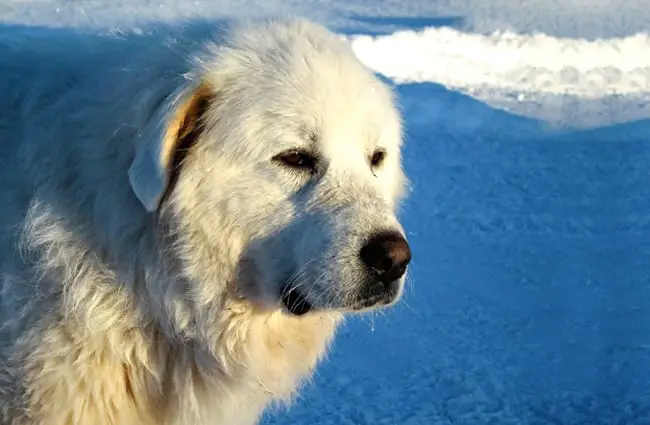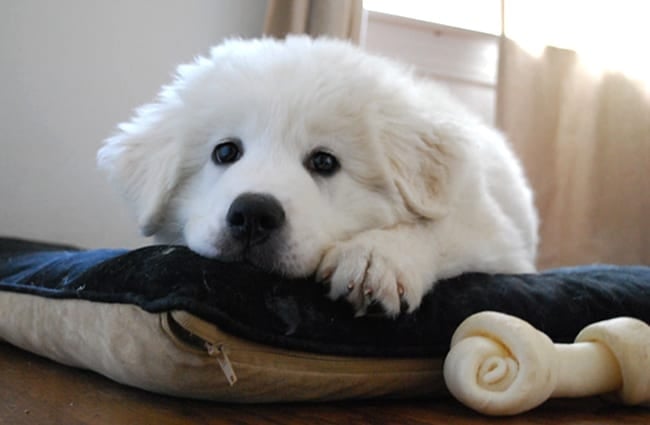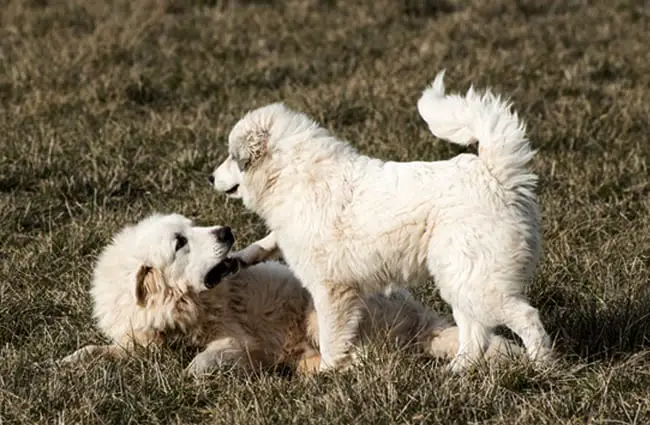The Majestic Great Pyrenees: A Comprehensive Guide
The Great Pyrenees, a breed steeped in history and renowned for its gentle nature and protective instincts, is a captivating animal. Often described as a gentle giant, this breed’s story spans millennia, originating in the rugged mountains and evolving into a beloved companion and capable working dog. This guide delves into the fascinating world of the Great Pyrenees, exploring its origins, behavior, ecological role, and interaction with humans.

Origins and Evolutionary History
The Great Pyrenees traces its ancestry back to ancient dogs of the Mediterranean region. These early canids accompanied nomadic peoples and eventually settled in the Pyrenean Mountains, forming the foundation of the breed we know today. The breed’s development was strongly influenced by the need for livestock guardians. For centuries, these dogs protected flocks from predators such as wolves and bears in the challenging mountainous terrain.
Evidence suggests the breed’s ancestors were present as early as 3000 BC, with depictions resembling the Great Pyrenees found in ancient artwork. The breed gained prominence in France during the 17th century and was associated with aristocracy. It was reputed to be the Royal dog of France, solidifying its status. The breed was later introduced to other parts of the world, including North America, where it continued its role as a livestock guardian and transitioned into a cherished family pet.
Physical Characteristics and Adaptations
The Great Pyrenees is a large, powerfully built dog, typically weighing between 85 and 115 pounds, with males generally larger than females. Its most distinctive feature is its thick, double coat, designed to withstand harsh mountain weather. The outer coat is long, coarse, and water resistant, while the undercoat is soft and dense, providing insulation against both cold and heat. Colouration is typically white or with markings of badger, gray, or tan.

Beyond its coat, the Great Pyrenees possesses other adaptations suited to its original purpose. Its large paws provide stability on uneven terrain, and its muscular build allows it to withstand physical challenges. The breed’s keen sense of smell and hearing are crucial for detecting potential threats. Their active guarding during dusk and dawn contributes to their alertness and vigilance even in low light conditions.
Habitat and Distribution
Historically, the Great Pyrenees inhabited the high altitudes of the Pyrenean Mountains, spanning the border between France and Spain. Over time, the breed’s distribution expanded alongside human settlements and livestock operations. Today, Great Pyrenees can be found worldwide, particularly in North America, Europe, and Australia.
While adaptable to various climates, the Great Pyrenees thrives in environments that allow for ample space and opportunities for exercise. They are well suited to rural settings and farms where they can utilize their natural guarding instincts. With proper socialization and training, they can also adapt to suburban or even urban lifestyles, provided their exercise needs are met.
Diet and Feeding Habits
As a large, active breed, the Great Pyrenees requires a nutritionally balanced diet to maintain optimal health. Historically, their diet consisted of whatever was available to them while guarding livestock, supplementing their meals with what they could hunt. Today, a high quality dog food formulated for large breeds is recommended.
Puppies require a diet rich in protein and calories to support rapid growth and development. Adult dogs benefit from a diet that maintains a healthy weight and supports muscle mass. It is crucial to avoid overfeeding, as this can lead to obesity and joint problems. Providing fresh water at all times is also essential.

Behavior and Social Structure
The Great Pyrenees is known for its calm, gentle, and independent nature. They are devoted to their families but can be aloof with strangers. This characteristic stems from their historical role as livestock guardians, where they needed to assess potential threats before acting. Early socialization is crucial to ensure they are well adjusted and comfortable in various social situations.
These dogs are naturally protective and possess a strong guarding instinct. They are not typically aggressive but will defend their territory and family if they perceive a threat. Their independence can sometimes make training challenging, requiring patience, consistency, and positive reinforcement techniques.
Reproduction and Life Cycle
Female Great Pyrenees typically reach sexual maturity between 18 and 24 months of age. The estrous cycle lasts approximately three weeks, with peak fertility occurring around days 9 to 14. Gestation lasts approximately 63 to 65 days, resulting in an average litter size of 6 to 8 puppies.
Great Pyrenees puppies are born blind and deaf, relying entirely on their mother for care. They begin to open their eyes and ears around two to three weeks of age, and they start to explore their surroundings. Weaning typically begins around six to eight weeks, and the puppies are usually ready to go to their new homes around eight to ten weeks. The average lifespan of a Great Pyrenees is 10 to 12 years.

Ecological Role and Interactions
Historically, the Great Pyrenees played a vital role in protecting livestock from predators such as wolves, bears, and coyotes. This contributed to the stability of agricultural ecosystems and reduced the need for lethal predator control. In modern times, their presence still helps to deter predators, particularly in areas where livestock are raised.
They generally coexist peacefully with other animals, including livestock and domestic pets, provided they are properly socialized. However, they may exhibit a strong guarding instinct toward anything they perceive as a threat. Their active guarding during dusk and dawn means they may occasionally interact with wildlife during the night, but they are not typically aggressive toward animals they do not perceive as a threat.
Human-Animal Bond and Cultural Significance
Throughout history, the Great Pyrenees has held a special place in human culture, particularly in the regions where they originated. In France, they were revered as symbols of royalty and nobility. They have also been depicted in art and literature, often representing loyalty, protection, and grace.
Today, the Great Pyrenees is cherished as a beloved companion and family pet. Their gentle nature and protective instincts make them excellent watchdogs and companions for people of all ages. Their majestic appearance and graceful demeanor continue to inspire admiration and affection.

Encountering a Great Pyrenees in the Wild
While less common to encounter in truly “wild” settings, a Great Pyrenees might be found guarding livestock on farms or ranches. If you encounter one, it is best to observe from a distance. Avoid direct eye contact, as this can be perceived as a challenge. Speak calmly and avoid sudden movements. If the dog appears agitated or protective, slowly back away and give it space. Do not approach or attempt to interact with the dog, especially if livestock are present.
Caring for a Great Pyrenees in Captivity (Zookeeping)
Caring for a Great Pyrenees in a captive environment requires a focus on physical and mental stimulation. A large enclosure with ample space to roam is essential. Regular exercise is crucial to prevent obesity and maintain muscle mass. Mental enrichment, such as puzzle toys and scent work, can help to prevent boredom and promote cognitive function. Socialization with other animals and humans is important, but it should be carefully managed to avoid overstimulation or aggression. Diet should consist of a high quality dog food formulated for large breeds, with portion sizes adjusted to maintain a healthy weight. Regular veterinary checkups and preventative care are essential to ensure the dog’s overall health and well-being.

The Great Pyrenees remains a captivating animal, blending a rich history with a gentle disposition. Its enduring appeal lies in its ability to be both a steadfast protector and a loving companion, a testament to its remarkable adaptability and unwavering loyalty.






![Red Angus Closeup of a beautiful Red Angus cowPhoto by: U.S. Department of Agriculture [pubic domain]https://creativecommons.org/licenses/by/2.0/](https://animals.net/wp-content/uploads/2020/03/Red-Angus-4-100x75.jpg)

